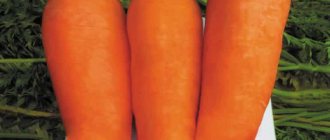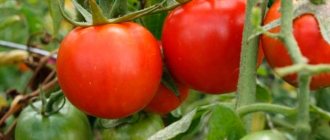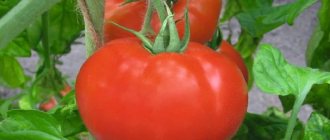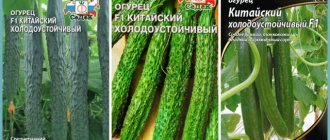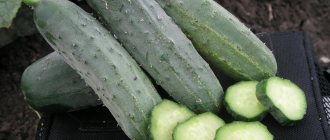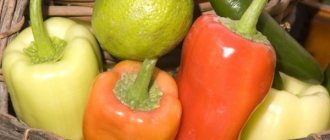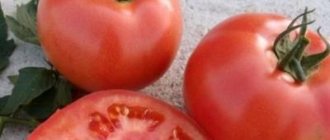Description of Dordogne carrot hybrid
Dordogne is an early ripening, stress-resistant hybrid. This vegetable crop is popular in the Russian Federation; it is grown on an industrial scale. The hybrid is characterized by high productivity: 75 tons of carrots are harvested from 1 hectare.
Orange cylindrical root vegetables have an excellent presentation. The marketability rate reaches 95%. The vegetable is juicy.
Reference. The hybrid is ideal for making juices and purees.
Root vegetables can be stored for 8-10 months without losing their shape or taste.
Origin and development
Dordogne (Dordogne F1) is a hybrid of the Nantes variety, bred by Dutch breeders. Since the beginning of the 21st century, this vegetable crop has been zoned and recommended for cultivation in the northern regions of the Russian Federation.
Chemical composition, trace elements and vitamins, beneficial properties
The Dordogne is characterized by a very rich chemical composition. Orange root vegetables contain vitamins C, E, K and B group.
The vegetable is rich in beta-carotene (12%), which is converted in the human body into retinol, a powerful antioxidant that has a beneficial effect on lung function.
The orange vegetable is rich in potassium, iron, phosphorus, magnesium, iodine, zinc and other minerals.
Dordogne carrots have a specific aroma thanks to essential oils. Root vegetables contain a lot of fructose and sugars - 7%.
Eating hybrid carrots promotes:
- strengthening the immune system;
- healing of burns and purulent wounds (grated vegetables can be applied to problem areas of the skin);
- cleansing the intestines;
- improving the functioning of the gastrointestinal tract and liver;
- getting rid of helminths;
- improved vision.
The vegetable is recommended for people suffering from anemia. Its regular use helps prevent myocardial infarction. It is suitable for dietary nutrition due to its low calorie content - 35 kcal.
Ripening period
Dordogne is an early ripening carrot. The ripening period ranges from 115 to 140 days, depending on the climatic conditions of the growing region and the quality of care for the vegetable crop.
Productivity
The hybrid is characterized by a consistently high yield: from 3.5 to 7.5 kg of carrots are harvested from 1 m² (from 1 hectare - up to 75 tons). The quality of the harvest is practically independent of external factors.
Disease resistance
Dordogne is a hybrid with a high degree of disease resistance. Plants are rarely affected by diseases. This can only happen in case of illiterate care.
Characteristics, description of appearance, taste
Dordogne carrots are distinguished by a loose, erect rosette with small foliage of a rich green color, belonging to the dissected type. The hybrid is not prone to bolting.
It is characterized by selected root crops, aligned in shape and size. The number of carrots that are deformed and deviate from standard sizes does not exceed 5%. The hybrid is not prone to cracking and overgrowth of fruits.
It is characterized by a regular cylindrical shape of the fruit with a blunt end. The surface is smooth and uniformly colored with an intense orange color. The internal structure of carrots is characterized by uniformity. It does not have a pronounced coarsened core. The top is never green. Carrots reach 20 cm in length and 6 cm in diameter. Weigh from 70 to 120 g.
The Dordogne has a pleasant taste. The pulp is not fibrous and is juicy and sweet. The taste of carrots is similar to the Nantes variety.
Important. Carrots do not darken after mechanical washing and maintain uniform color.
For which regions is it best suited?
The hybrid is suitable for cultivation in all regions of the Russian Federation, including the northern ones. Dordogne grows both in open ground and greenhouse conditions.
Varietal characteristics
The Dordogne f1 carrot variety is a hybrid variety, the Nantes prototype. It appeared during the selection process at Syngenta Seeds and was included in the Russian State Register in 2007. According to the description, Dordogne f1 grows vegetables:
- 18-22 cm long,
- weighing 80-120 g,
- diameter 4-6 cm.
The root vegetables are mostly smooth, cylindrical in shape, have a bright orange color, sweet and juicy pulp.
The chemical composition of vegetables contains:
The vegetable crop is widespread all the way to the Far North.
The percentage of curvature of the root crops of the Dordogne f1 hybrid does not exceed 5%.
Description of Dordogne f1 carrots:
- Early ripeness.
- The period from the moment of sowing seeds to the stage of technical ripening of vegetables ranges from 110 to 140 days. In this case, elective harvesting of the carrot crop 3 weeks earlier than this period is permissible.
- The short growing season is combined with good yield indicators, which range from 3.5-7.2 kg per 1 sq. m. m of sown area, while the vegetable crop shows high yields even when cultivated on heavy soils.
The main advantages and disadvantages of a hybrid
Advantages of the Dordogne hybrid:
- high resistance to diseases and pests;
- unpretentiousness to soil quality and the ability to adapt to temperature changes and different weather conditions;
- high yield;
- attractive appearance and pleasant taste;
- excellent keeping quality and transportability of root crops;
- high marketability rate of 95%;
- resistance of root crops to mechanical damage.
No disadvantages were identified in the hybrid.
What is the difference from others
The Dordogne hybrid compares favorably with other carrot varieties not only in its high yield, but in its resistance to cracking and mechanical damage, and frost resistance.
Comparative characteristics of the most common carrot varieties and hybrids.
| Name | Ripening time | Yield indicator, kg/m² | Indicators of length (cm) and weight (g) of root crops |
| Dordogne | early ripening | 7,5 | 20 70-120 |
| Vita longa | early ripening | 5 | 24 90-128 |
| Chantenay 1246 | mid-season | 3-6 | 20 120-200 |
| Crunch | early | 3 | 17-20 90-150 |
| Malika | mid-late | 4,5 | 16 90-180 |
| September | mid-season | 5-7 | 14-18 90-190 |
Features of planting and growing
Compliance with the rules of planting and care is the key to a rich harvest. Dordogne is not recommended to be grown in the same area for more than 3 years in a row. Otherwise, the plants' susceptibility to diseases and pests increases.
Preparing for landing
Before planting, it is important to prepare the soil. In autumn, it is cleared of plant remains and dug up. Carrots grow better in a lighted area. It is better to avoid shade and waterlogged soil.
Granulated seeds do not require preliminary preparation. They only need watering when planting. It is recommended to soak ordinary seeds for 1 day in warm water.
Soil requirements
To get a good harvest you need non-acidic soil. It is recommended to add slaked lime to soil that has a high acidity level:
- in sandy – 3-4 kg per 1 m²;
- in clay – 5-7 kg per 1 m².
Heavy clay soil will need to be loosened and sawdust added.
Predecessors
After beets, celery, dill and parsley, carrots are not grown. It is preferable to grow it in an area where onions, cabbage or cucumbers previously grew.
Dates, scheme and rules of planting
In the southern part of the country and the central Dordogne zone, they are planted in the first half of April, and in the northern regions - in May . The optimal soil temperature is not less than +4…+6°С. Favorable temperature conditions for carrot growth are +18…+25°C. The crop is afraid of frost; at -5°C it dies.
The seeds are planted in furrows with a depth of 2 cm. The distance between the rows is 20-25 cm. The distance between the seeds should be at least 5 cm. Then the bed is watered, and peat is poured between the rows.
No more than 110 seeds are required per 1 m² of soil. The hybrid germination rate is high - up to 95%.
Features of cultivation
The vegetable crop is unpretentious. Hybrid agricultural technology necessarily includes:
- carrying out deep autumn plowing of the soil so that the roots can develop to a depth of 0.3 m;
- applying fertilizers before sowing and during the growing season;
- planting without excessive thickening;
- ensuring infrequent watering, repeated loosening and mulching of the beds.
Nuances of care
The use of mulch is an important maintenance nuance that reduces the number of waterings. Plants also need loosening and weeding.
Watering mode
Dordogne does not require frequent watering. It is recommended to water with warm water once every 10 days.
Important! Watering is stopped 3 weeks before harvest.
Thinning and weed control
Removing weeds is a mandatory procedure. Weed carefully, trying not to touch the seedlings.
Thin out twice: as soon as the sprouts appear and a month later. Remove weak shoots. A distance of 4-6 cm is left between plants. During the second thinning, it is increased to 6-7 cm.
Top dressing
For the first time, fertilizers diluted with water are applied at the beginning of the growing season. Dissolve in 10 liters of water:
- ammonium nitrate – 30 g;
- potassium salt – 15 g;
- “Superphosphate” – 10 g.
After 20 days, the planting is watered with a solution of wood ash (450 g per 10 l).
Attention! Carrots cannot be fertilized with manure; mineral fertilizers are preferable.
Disease and pest control
Errors in agricultural technology increase the risk of plants being damaged by diseases and pests. In such cases, the following methods are applicable:
- Spraying with the safe biological preparation “Gamair” in dry weather helps against root rot;
- for carrot flies use the product “Confidor”.
Preparing the soil for sowing
If the region is dominated by chernozems, sand is added to make the soil more loose and soft, 0.5 buckets per 1 m2. Compost and manure mixtures are not required. An increased percentage of nutrients in the soil disrupts metabolism. Root crops become deformed and crack.
Sand and rotted compost are usually added to loams, 20 kg/m2. Soils should be loose. It is recommended to check the acidity. Carrots grow well in neutral soils.
Acidity is checked with test strips, which can be purchased at the pharmacy. In case of strong acidity, it is necessary to add slaked lime, 1 kg/m2. Normal pH is 5.5-6.5 units.
Sandy soils need to be strengthened with rotted compost and sawdust. When growing crops on sandstones, mulching is not required. The soil retains moisture well, and with the correct watering schedule, it does not become waterlogged. Fungal infections rarely develop on sandy soils.
Clay soil is considered heavy, infertile, and dense. According to reviews from gardeners, compost, sand, sawdust, and peat are added to problem soils. Gardeners have more work to do, so it is recommended to create a special soil mixture for root crops and fill the garden bed with it.
The mixture consists of 2 buckets of compost, 1 bucket of peat and 0.5 buckets of sand. Everything is mixed and placed on the plot for growing root crops. The depth of the soil should not be less than 50 cm.
Ash 1 kg/m2, the preparation “Nitrophoska”, 50 g/m2, must be added to the area under carrots. Ash is a natural antiseptic. It prevents the development of fungus. “Nitrophoska” destroys insects that remain in the soil over the winter.
When sowing in spring, all work is carried out in the fall. When growing winter crops, the soil is prepared at the end of summer. Before sowing, mineral fertilizers are applied: 20 g of potassium sulfate and potassium salt, 40 g of superphosphate. The ground is leveled and a bed is made.
Harvest and storage
Proper harvesting and suitable storage conditions guarantee good shelf life of carrots.
How and when to collect
Carrots are harvested in early August in dry and warm weather. The soil is removed from the root crops and left to dry.
Mechanized harvesting of Dordogne carrots is acceptable. However, it is preferable to harvest by hand, pulling the roots out of the ground.
Storage features and shelf life of the hybrid
Store the harvest in a basement or cellar at a temperature not lower than +4°C. The room must be dry and ventilated. Root vegetables are kept in ventilated boxes. The shelf life is up to 10 months.
How to prepare seeds?
When sowing in autumn, the seeds are washed and left in a solution of potassium permanganate. This completes the preparation of the seed. If the manufacturer offers seeds on a tape or in the form of dragees, then no preparation is carried out. Sowing is carried out immediately.
More on the topic: What to do if the carrot tops turn black?
During spring sowing, the seeds are kept in an antiseptic and a biogrowth stimulant. For winter crops, melt water is such a stimulant:
- for spring seedlings use cold water, preparations “Epin”, 1.5 g/5 l, “Potassium humates”, 2.5 ml/5 l. The treatment is carried out for 2 hours;
- Next, place the seeds in a damp cloth and put them in the refrigerator so that their metabolic processes begin. Seeds ripen normally at a temperature of 3-5 C;
- when they begin to increase in size, you can start sowing. They don't wait for sprouts. They are fragile and can break.
It can take 7 days to prepare seeds for spring sowing. This must be taken into account when starting work in the garden.
What difficulties may there be when growing
Problems when growing a hybrid can arise due to incorrect planting care:
- The taste of carrots is bitter . The reason is the exposure of the upper part of the root crop. The solution is to cover the protruding vegetable with soil and thin out the rows.
- Carrots grow irregularly shaped. The reason is the application of organic fertilizers or heavy, rocky soil. The solution is the use of mineral fertilizers and the choice of light soil.
- Overgrowing of the root crop with roots, as a result - deterioration in keeping quality. The reason is lack of moisture and nutrients. The solution is moderate watering and high-quality soil.
Farmer reviews
Reviews about the Dordogne carrot hybrid are positive, since the vegetable does not require labor-intensive care and always produces a good harvest.
Oksana, Tula: “I grow carrots for sale. I have been planting Dordogne carrots in the beds for five years now. It's a win-win for me. My plot is located in the steppe zone, and the soil on it is not fertile. Despite this, I get a good harvest. There are very few non-marketable carrots.”
Sergey, Saratov: “ My land plot is located in a lowland. Moisture often accumulates there and the soil does not dry out well. Soil with sourness. In the fall I dig up the beds, in the spring I dig up the harrows. Carrots grow excellently. The bad thing is that my plot is small, I have to plant in the same place for four years in a row. However, this does not affect the yield.”


